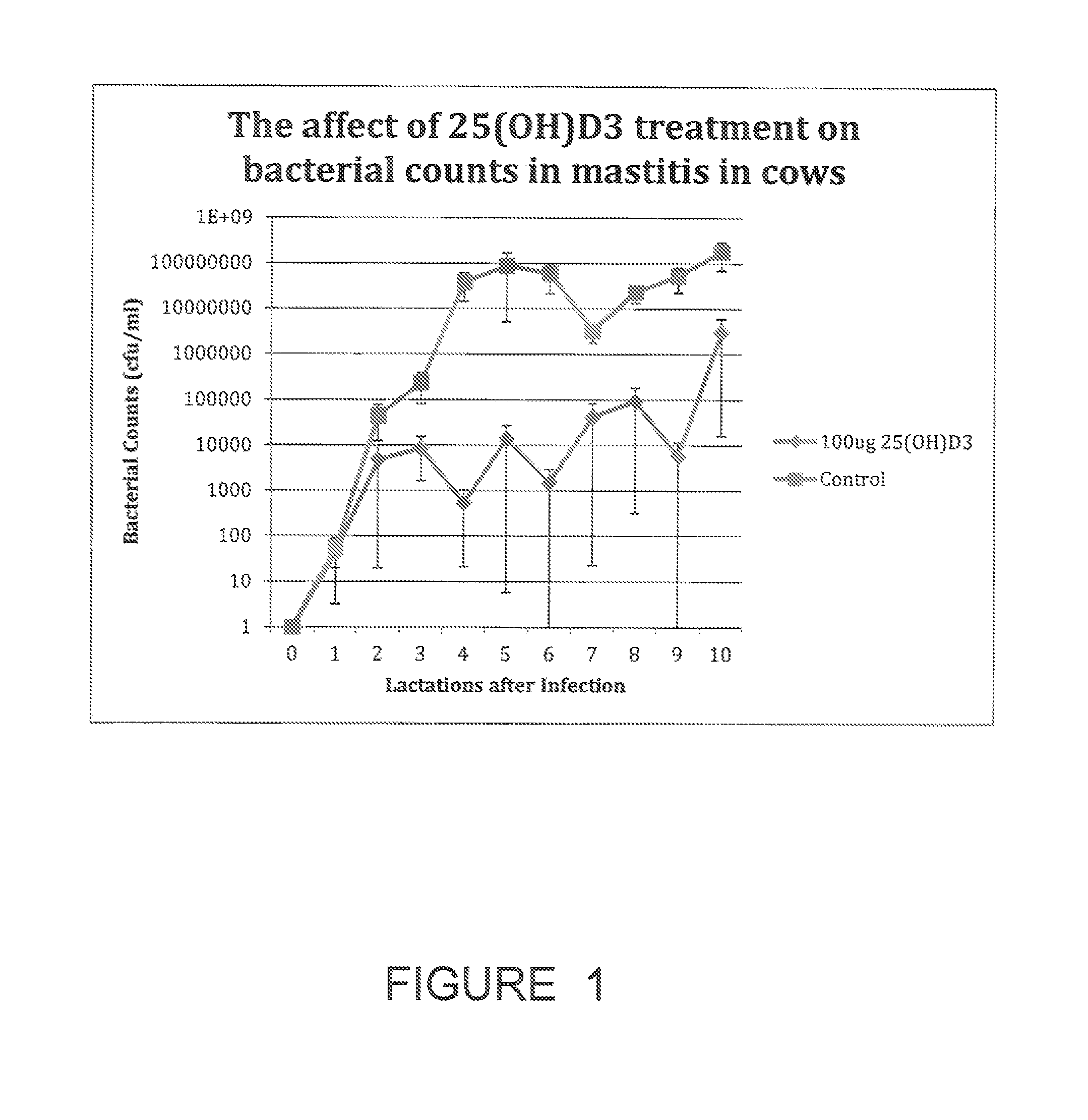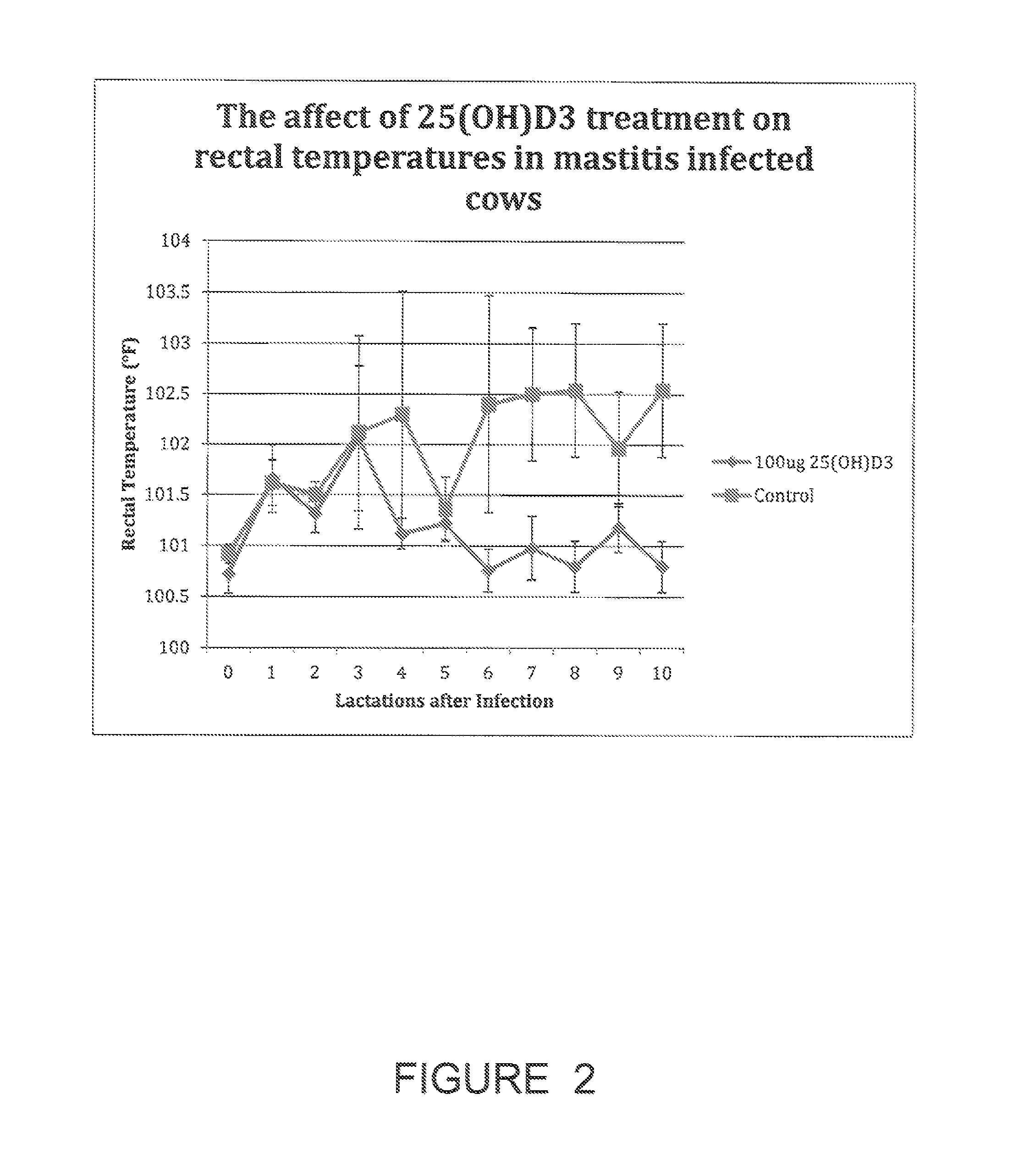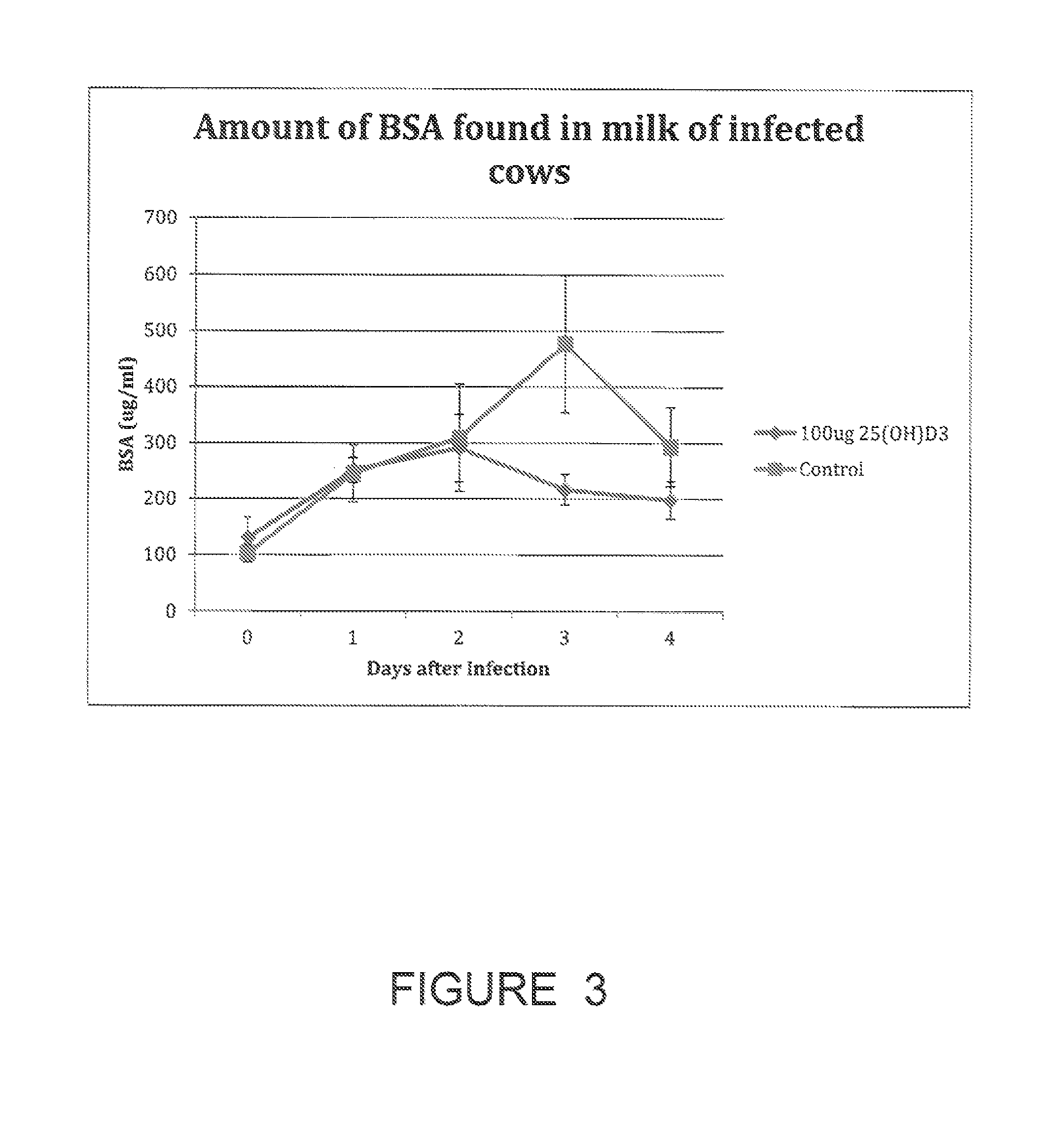Use of vitamin D in dairy mastitis treatment
a technology of vitamin d and mastitis, applied in the field of mastitis prevention and treatment in animals, can solve the problems of affecting the production of milk, and affecting the quality of milk, so as to prevent or treat mastitis, inhibit or significantly reduce the growth of bacteria in the animal's mammary gland
- Summary
- Abstract
- Description
- Claims
- Application Information
AI Technical Summary
Benefits of technology
Problems solved by technology
Method used
Image
Examples
example 1
[0027]In a first experiment, we infused 100 μg of 25(OH)D3 into an infected mammary quarter of two cows and showed increased gene expression of Cyp24A1 compared to cells obtained prior to 25(OH)D3 infusion. This observation demonstrated that gene expression of immune cells in the milk could be affected by a single infusion of vitamin D and that the cells in an infected gland are producing sufficient 1α-OHase to convert the 25(OH)D3 to 1,25(OH)2D3 and subsequently cause the gene expression of Cyp24A1.
[0028]To demonstrate the efficacy of the use of 25(OH)D3 as an intramammary immuno-modulator, we infected 14 animals with S. uberis by infusion of 500 cfu into one quarter of each mammary gland. Seven of the animals were treated after each milking with 100 μg of 25(OH)D3 in 10-ml fetal bovine serum (FBS), the other seven were sham treated with 10-ml FBS only. FIG. 1 shows the number of bacteria isolated from the vitamin D treated and control animals. The 100 μg 25(OH)D3 infusion resulted...
example 2
[0029]A mastitis-infected cow that did not respond to typical mastitis treatments was shown to have a chronic Pseudomonas infection. After weeks of various conventional treatment the cow was treated with 25(OH)D3 as described in Example 1, with 100 ug infusions twice a day in the infected gland. The treatment of this animal with 25(OH)D3 caused the bacterial load to go from thousands of bacteria per ml to at or below our detection limit of 100 cfu / ml after 2 treatments (FIG. 4).
PUM
 Login to View More
Login to View More Abstract
Description
Claims
Application Information
 Login to View More
Login to View More - R&D
- Intellectual Property
- Life Sciences
- Materials
- Tech Scout
- Unparalleled Data Quality
- Higher Quality Content
- 60% Fewer Hallucinations
Browse by: Latest US Patents, China's latest patents, Technical Efficacy Thesaurus, Application Domain, Technology Topic, Popular Technical Reports.
© 2025 PatSnap. All rights reserved.Legal|Privacy policy|Modern Slavery Act Transparency Statement|Sitemap|About US| Contact US: help@patsnap.com



